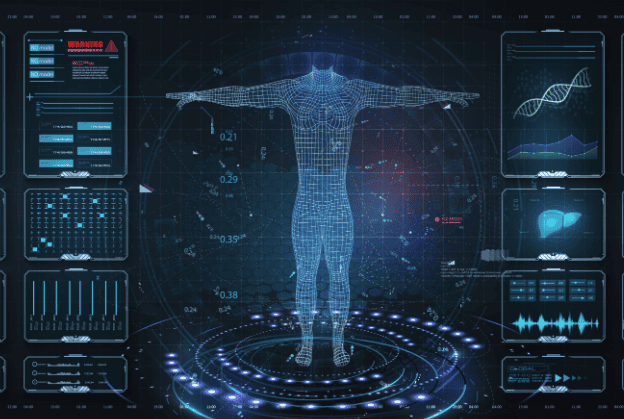In a world where passwords can be cracked in seconds and hackers grow more cunning by the minute, a new line of defense is emerging—one that is a part of who we are. Enter biometric authentication — a cutting-edge technology that uses unique physical or behavioral traits to verify identity. From unlocking smartphones with a glance to securing sensitive data with a fingerprint, biometric authentication is revolutionizing how we approach cybersecurity. With the global biometric system market expected to hit nearly $68.6 billion by 2025, it’s clear that this technology is gaining momentum. But what exactly makes biometrics so powerful, and how secure is it in an era where privacy concerns are on the rise?
Jump to where you need:
- What is Biometric Authentication?
- Main Types of Biometric Identification
- The Power of Biometrics: Strengths and Advantages
- The Security Challenges of Biometric Authentication
- Passwords vs. Biometrics: Which is Stronger?
What is Biometric Authentication?
Biometric authentication refers to the process of identifying or verifying individuals based on their distinct biological characteristics. These can include physical traits such as fingerprints, facial recognition, and iris scans, or behavioral traits like voice patterns and typing rhythms. Unlike traditional methods that rely on knowledge-based security (e.g., passwords) or possession-based factors (e.g., security tokens), biometrics leverage unique human attributes that are inherently difficult to steal or replicate. This not only enhances security but also offers a seamless and convenient experience for users, removing the need to remember complex passwords or carry additional security devices.
What sets biometric authentication apart from other security measures is its reliance on traits that are deeply personal and virtually impossible to forget. Our fingerprints, facial features, and voices are with us at all times, making them more reliable identifiers than passwords or keycards. The widespread adoption of biometrics in consumer devices like smartphones and laptops has brought this technology to the forefront of mainstream security practices.
Main Types of Biometric Identification
- Facial Recognition: Identifies individuals by analyzing their unique facial features. This technology is widely used in smartphones, credit card payments, and law enforcement.
- Fingerprint Recognition: Uses a person’s distinct fingerprint to verify identity. Common in mobile devices, automobiles, and building security, this is the most widely adopted biometric authentication method.
- Eye Recognition: Scans the unique patterns of the iris or retina for identification. Though highly accurate, it’s less common due to implementation challenges, often used in high-security environments like nuclear facilities.
- Voice Recognition: Authenticates individuals by analyzing voice characteristics such as tone, pitch, and frequency. Frequently used in call centers for customer verification, especially in industries like banking.
- Gait Recognition: Identifies individuals by their unique walking pattern. While not commonly used today, it’s expected to gain popularity as more advanced authentication methods emerge.
- Vein Recognition: Utilizes infrared light to map the pattern of blood vessels in a person’s hand or fingers. Known for its extreme accuracy, vein recognition surpasses even retina/iris recognition in precision.
The Power of Biometrics: Strengths and Advantages
Biometric authentication offers a range of powerful advantages that make it a preferred solution for both security and convenience. By leveraging unique human traits, biometrics not only enhances protection against threats but also improves the overall user experience. Here are some key strengths of biometric technology:
- Enhanced Security: Biometric authentication is based on unique physical traits, making it much harder to replicate or steal compared to traditional passwords or PINs. This provides an extra layer of security that protects sensitive information from unauthorized access.
- Convenience and Speed: Biometrics eliminates the need to remember complex passwords or carry security tokens. Users can authenticate themselves instantly with a fingerprint, face scan, or voice command, making the process faster and more convenient.
- Reduced Fraud: Since biometric traits are unique to each individual, they greatly reduce the risk of identity theft or fraudulent access. Even if a hacker obtains your password, they can’t replicate your fingerprint or facial structure.
- Seamless User Experience: Many biometric systems operate in the background, allowing users to authenticate without disrupting their workflow. This frictionless experience leads to higher user satisfaction, especially in consumer devices like smartphones and laptops.
- Scalability Across Devices: Biometric authentication can be easily implemented across a wide range of devices and industries—from smartphones and laptops to secure access in vehicles and buildings—making it a versatile and scalable solution.
- Continuous Authentication: Some biometric systems offer continuous authentication, monitoring user behavior (like how they type or move) to ensure ongoing verification. This makes it harder for an unauthorized person to access systems even if they manage to bypass the initial security layers.
The Security Challenges of Biometric Authentication
While biometric authentication offers significant security advantages, it is not without its challenges. One of the primary concerns is the issue of data privacy. Biometric data, once compromised, cannot be easily changed like a password. If a person’s fingerprint or facial recognition data is stolen, it poses a lifelong security risk since these identifiers are permanent. Storing biometric information also introduces vulnerabilities, as centralized databases can be targeted by hackers. Even with encryption, a data breach involving sensitive biometric information could have far-reaching consequences, particularly in industries like banking or healthcare where data privacy is paramount.
Another challenge is the potential for spoofing and hacking attempts. As advanced as biometric systems are, they are not completely immune to attacks. For instance, high-resolution photos or videos can sometimes be used to fool facial recognition systems, while fingerprints can be replicated using molds or prints left on surfaces. Additionally, legal and ethical concerns arise around the use of biometrics, such as the possibility of unauthorized surveillance and collection of personal data without consent. These concerns are also becoming more prominent as biometric technologies advance, raising questions about consent, data ownership, and the potential for intrusive surveillance. Each of these issues highlight the importance of implementing strong security measures around biometric systems to ensure that they provide not only convenience, but the highest level of protection.
Passwords Vs. Biometrics: Which Is Stronger?
When comparing passwords to biometrics, it becomes clear that biometrics offer a stronger and more secure method of authentication. Unlike passwords, which can be easily compromised through various attack methods, biometric authentication requires an aspect of the user’s physical presence. This adds a critical layer of security, as biometrics are inherently tied to the individual’s unique traits, such as their fingerprint or facial features, making them much harder to replicate or steal. Even if hackers gain access to other personal information, they cannot bypass biometric systems without being physically present or registered to the specific device.
Passwords, while still widely used, are vulnerable due to the simplicity of hacking techniques. Phishing attacks, for example, trick users into giving up their passwords by impersonating trusted entities, which is much harder to defend against. In contrast, biometrics significantly reduce the risk of such attacks because authentication cannot be faked or duplicated. The uniqueness of biometric data, such as fingerprints or facial recognition, makes spoofing far less common and much more challenging. While passwords are still a critical element of many security strategies, biometrics provide a far stronger defense, especially when used as part of multi-factor authentication, combining both convenience and enhanced protection. In the battle between passwords and biometrics, the latter clearly stands as the more secure and reliable option, offering unparalleled protection and better peace of mind in an increasingly digital world.




